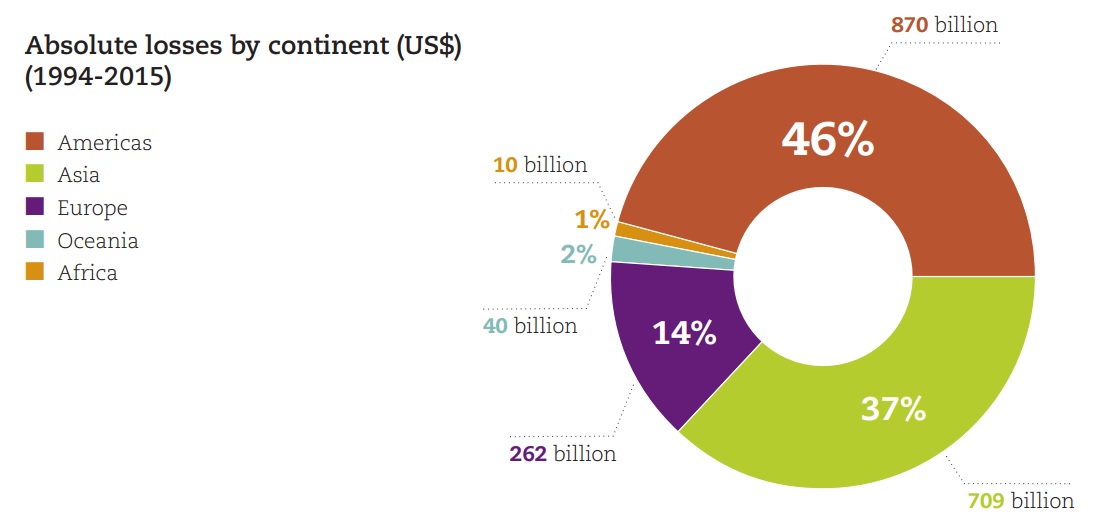Storm Harvey has devastated the US state of Texas, with at least 33 people reported dead and thousands forced to evacuate their homes.
The storm has now hit Louisiana, with New Orleans expected to see ten inches of rainfall within 36 hours.
But how does Harvey compare to other weather disasters in America and around the world?
The US picture
While Storm Harvey is a fairly exceptional case, floods regularly cause catastrophic damage and human tragedy in the US.
Last year alone, 126 people were reported to have been killed by flooding.
Data from the US National Weather Service sets out the number of flood-related fatalities every year since 1940.
During the years shown in this graph, 1972 saw the most flood fatalities.
This was the year of the Black Hill Floods in South Dakota, which saw up to 15 inches of rain falling in just six hours.
Some 238 people were killed and a further 3,057 injured. The flooding also destroyed 5,000 cars and 1,335 homes.
Flooding was the biggest cause of weather-related deaths in the US last year, with a further 125 people dying as a result of extreme temperatures.
75 people were killed by tornadoes, hurricanes and high winds, while lightning strikes caused another 38 deaths.
Looking at these four weather dangers independently, the three biggest spikes in fatality numbers since 1940 have all occurred within the last 22 years. This is despite improvements to weather defences and emergency services.
The extent to which climate change may or may not be a factor is something we’ve covered here.
The biggest spike in fatalities came in 2005, with Hurricane Katrina.
This is followed by the 1995 Chicago Heat Wave, when hundreds died after temperatures reached 41°C.
The rest of the world
The US witnesses a high rate of weather disasters, compared to many other countries. But it is by no means alone.
Indeed, at the same time as Hurricane Harvey is battering America, flooding has devastated huge swathes of south Asia. Reports have estimated that at least 1,200 people have been killed so far and affected close to 40 million others.
Other countries that have already experienced severe flooding disasters this year include Colombia (254 fatalities), Sri Lanka (150 fatalities) and Zimbabwe (246 fatalities since December).
This map from a UN report compares the number of weather disasters that were reported in each country between 1995 and 2015. (This is not a reflection of impact; merely the number of incidents).
According to the UN report, the number of floods per year has gone up during this period, with the death toll also rising in many parts of the world.
It says: “Floods strike in Asia and Africa more than other continents, but pose an increasing danger elsewhere.
“In South America, for example, 560,000 people were affected by floods on average each year between 1995 and 2004. By the following decade (2005-2014) that number had risen to 2.2 million people, nearly a four-fold increase.”
Flooding has accounted for nearly half of all weather related disasters worldwide since 1995, and has killed an estimated 157,000 people and some 2.3bn others.
However, statistics showing the impact of disasters cannot be relied on to be 100 per cent accurate, since they require accurate reporting. Many more people may have been killed or affected not appear in the figures – particularly in countries which lack sufficient resources to monitor the impact of disasters.
Overall, China has seen the highest number of people affected by weather-related disasters (between 1995 and 2015). Some 2.2bn people were affected over the two decades.
China was followed by India (805m), Bangladesh (131m), and the Philippines (130m).
In terms of the financial impact of weather disasters, the American continents see the biggest losses.
This is just as much a reflection of wealth as it is a reflection of the weather.







